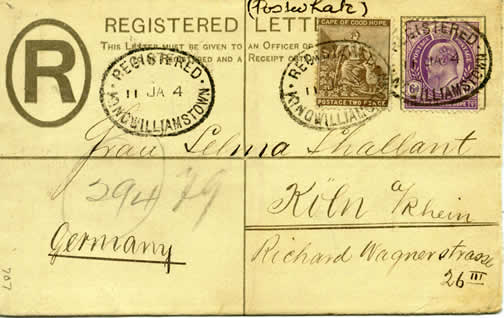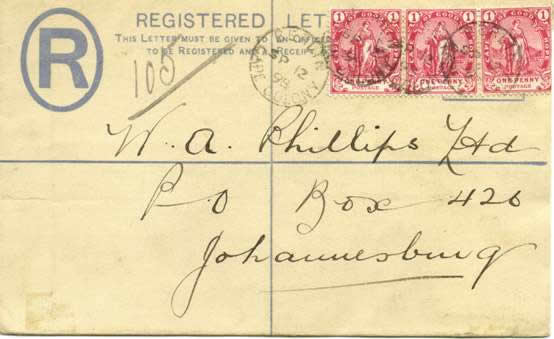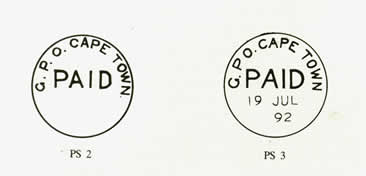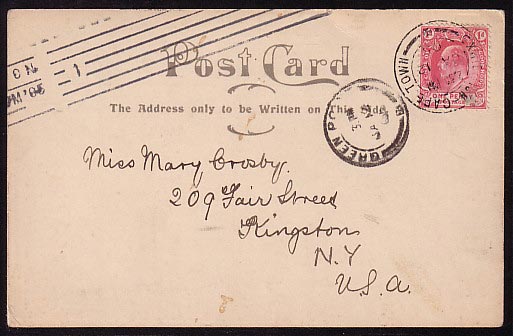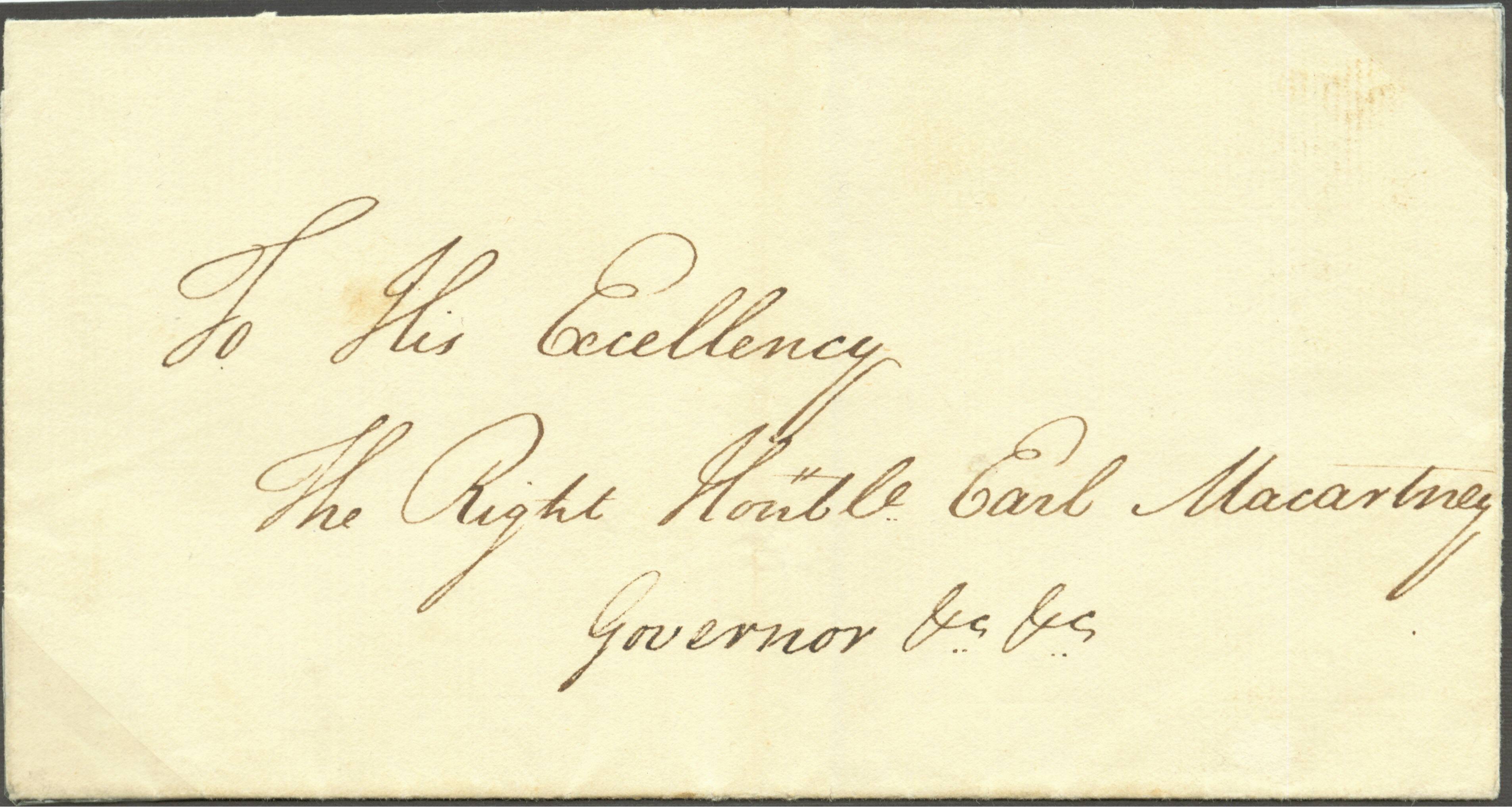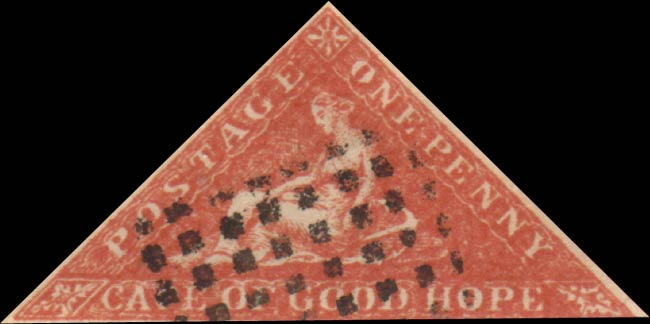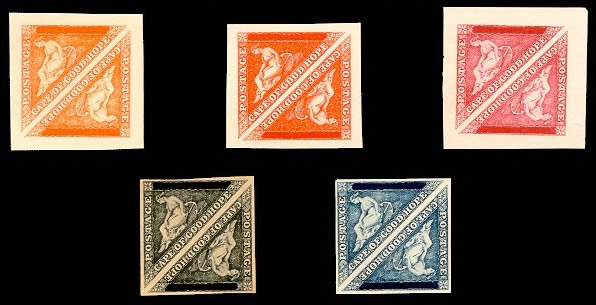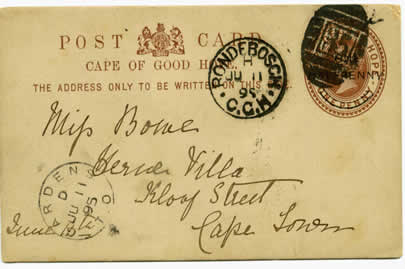The Travelling Post Ofice service of the Cape of Good Hope comenced late 1882. Special vans were fitted to carry mail. In 1883 the line reached Victoria West but as the railway lines were extended so did the T.P.O. In 1885 the service reached De Aar and the section from Cape Town to De Aaar…
The Travelling Posts – Eastern Line
From approximately 1883, three postmarks (PS 4 to 6) sometimes called Argus Wheels, were in use on circulars as well as newspapers of the Cape of Good Hope. Another postmark (PS 7) is, in the main, seen stamped on wrappers and circulars, but its use has also been noted on envelopes. The circle measures 27…
Cheap Rate Mail
Although the application of an adhesive postage stamp provides a convenient means of prepaying for postage on a small number of letters, special handstamps were supplied to facilitate the handling of large batches of letters.
Cape Town Exhibition
The Cape Town national and international industrial exhibition took place in Cape Town from 20 November 1904 to 28 February 1905. The Cape Town Exhibition was located on Green Point Common. It was officially opened on 26 November 1905. A temporary post office and a commemorative datestamp was provided.
The Burger Senate Wax Seal
The Burger Senate Wax seal was used to denote Free Postage during the Batavian Republic period of the Cape of Good Hope, when after the Treaty of Amiens the first British Occupation was terminated and the Cape of Good Hope was restored to the Batavian Republic.
First British Occupation of The Cape of Good Hope
Background to The First British Occupation of the Cape of Good Hope Before examining the history of the First British Occupation of the Cape of Good Hope it is instructive to place it in the context and background of the period. In 1795 the heavily taxed burghers of the frontier districts of the Cape, who…
Newspaper Postmarks of The Cape of Good Hope
From approximately 1883, three postmarks (PS 4 to 6) sometimes called Argus Wheels, were in use on circulars as well as newspapers of the Cape of Good Hope.
Second Definitive Issue (1871-1876)
The Second Definitive Issue ‘Retouched Die’ the Outer Line Removed (1871-1876) As the old dies started to wear out the printers Messrs De La Rue & Co. requested to have the original dies altered by removing the outer line frame. In addition they had the shading upon the figure of Hope and the vine leaves…
Cape Triangulars – Forgery By Spiro
The Spiro brothers made large numbers of forgeries, including a large number of Cape Triangulars from 1864 to about 1880. They had their own lithographic printing firm in Hamburg (Germany).
Triangular Stamps Earl of Crawford Trials
Die proofs of 6d. and 1s. are known printed in different colours that the set issued.
‘Modern Die’ Proofs of the Cape of Good Hope Triangular Stamps
The Perkins Bacon Modern Die Proofs Allis lists thirteen modern die proofs of the 6d and 1s, each in the following colours: black, slate, carmine, blue, brown, red-brown, yellow-green, deep green, yellow, violet, red-violet, orange-brown and bright-rose. It is stated that only six copies were printed in each colour. All early authors ascribe them to…
Cape of Good Hope Telegraph Company 1860
The first telegraph line in southern Africa was inaugurated on 6th May 1860 in the Cape of Good Hope. It operated as a private enterprise, owned by the Cape of Good Hope Telegraph Company. It operated a line between Cape Town and Simonstown. Its first office was a wooden, pagoda-like structure on the comer of…

